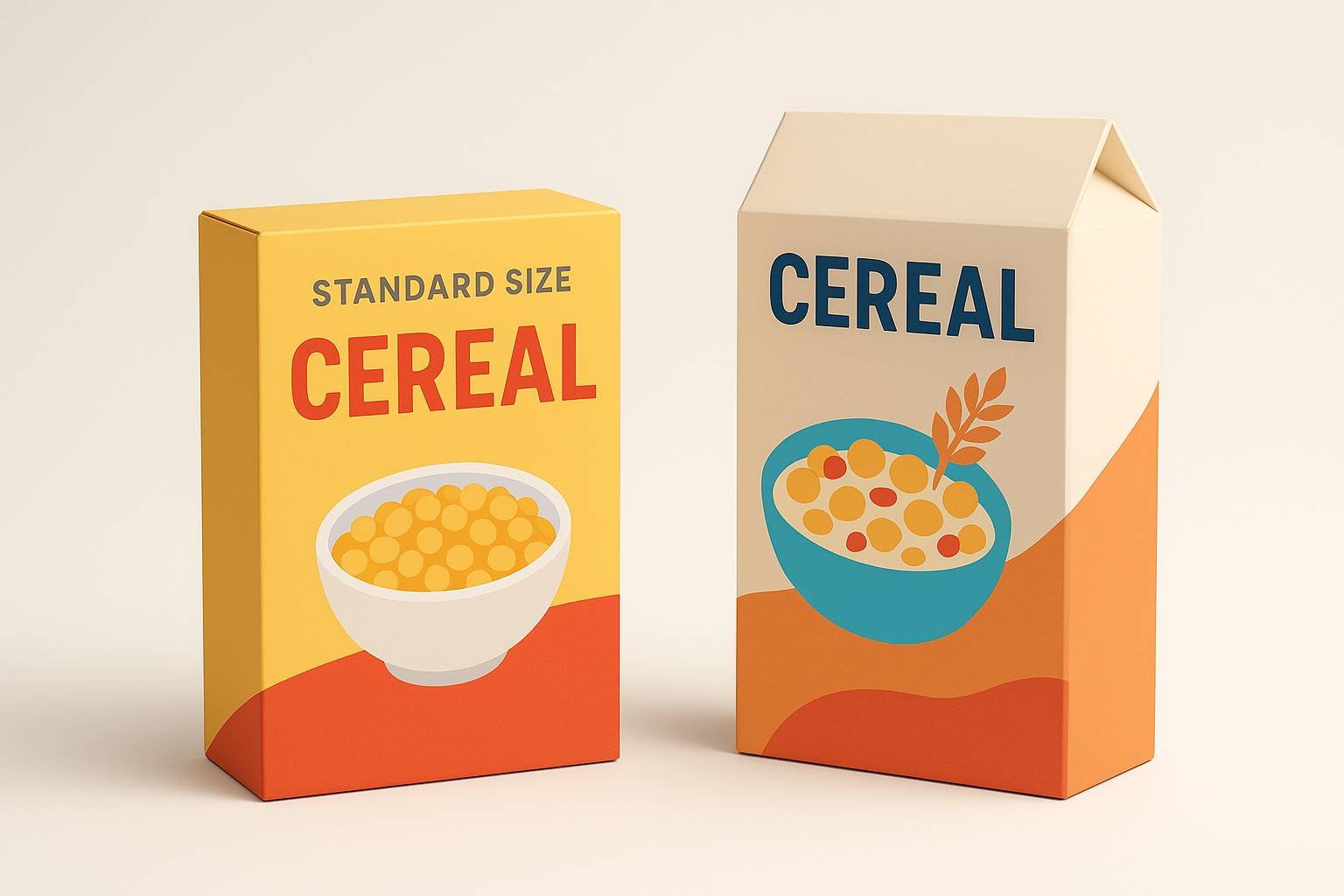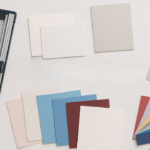Standard vs. Custom Cereal Box Dimensions: What’s the Difference?

When we describe a cereal aisle as a battleground. The focus is instantly shifted to the breakfast box and its role as a marketing tool. Although the vibrant artwork and catch phrases of a cereal box have a hand in grabbing customer attention. But its dimensions, box’s length, width, and height, that dictates its authority on the shelf. Therefore, it is important to rely on custom cereal box dimensions rather than standard packaging. Because a standard box is so small that it fades in a competitive landscape. Or sometimes it is too bulky that it costs a fortune in shipping. So, will you count on standard cereal box dimensions? Or are you ready to invest in a custom cereal box dimension?
If you are still perplexed by the options available. Then, read this blog post to explore the difference between the two. It will help in making the right call for your product.
Understanding standard cereal box dimensions
A standard cereal box is a typical rectangular-shaped container. These boxes are mass-produced; therefore, they are easily available without any delay in production or shipping. They are structurally engineered to fit a standard-sized retail shelf that measures 48″ x 22″ x 106″, or a kitchen wall cabinet of 12″ x 12″ x 30″. Although there is hardly any variation in the size of standard cereal boxes. But these containers are further categorized into three types. Personal serving, medium-sized box, and family packs. The following are the dimensions of these boxes:
- Personal cereal box: (L x W x H) (6″ x 2″ x 8″)
- Medium-sized cereal box: (L x W x H) (8″ x 2.5″ x 12″)
- Family or Economy cereal box: (L x W x H) (10″ x 3″ x 15″)
It is crucial to highlight that these dimensions of cereal boxes are not fixed. They can slightly vary depending on brand requirements, net weight, and the shape of a cereal flake.
Pros and Cons of standard dimensions
For some businesses, the high cost of custom cereal boxes feels like a splurge they cannot afford. Therefore, they are inclined towards a standard dimension box. Moreover, it provides numerous other benefits. Such as:
- In standard-sized boxes, the setup fee and tooling cost of packaging machinery is lower. So, this brings the per-unit price down.
- These boxes have a faster production time due to comfortable folding and filling procedures.
- Moreover, the dimensional weight of standard cereal boxes is less, which provides cost-effective shipping rates.
However, for every good point there is a bad one. So in this case. A standard cereal box usually fails to stand out on a retail shelf due to its typical shape and size. Moreover, the size of these boxes and the cereal volume do not always match, which often leads to poor protection and flimsy packaging.
Exploring custom cereal box dimensions
These dimensions refer to the size and shape of custom cereal boxes designed as per product needs and brand requirements. This means you need a new die line to craft these boxes.
Why are custom dimensions necessary?
There are no specific dimensions of custom cereal boxes. However, in certain situations, custom dimensions become necessary. Such as:
- If the packaging content differs from the traditional ready-to-eat cereal volume. The best example of this case is large-sized muesli or granola bags.
- Sometimes a brand chooses a custom shape or taller and slimmer box for their cereals. The goal is to stand out on a retail shelf with visual distinctively or to achieve wider space for branding elements.
- Many brands desire to integrate unique structural features into their cereal packaging. Such as a die-cut window to increase product visibility. Or customized handles for ease in carrying. The addition of these elements frequently leads to customized dimensions.
Pros and Cons of using custom dimensions
Investing in custom dimensions cereal boxes offers numerous benefits:
- Customized dimensions deliver a right-sized box for the product. This offers a high-end structural stability, reduces material wastage, and lowers the shipping cost, too.
- It is quite evident that customized dimensions are used for uniquely shaped cereal packaging. This helps the brand and product at the same time by standing out on a retail shelf.
- With custom-sized packaging, brands can experiment with creative structural designs. This can elevate the consumer experience and even help to win loyalty.
Where there are assets, there are liabilities, too. Compared to standard dimension boxes, there is just one major con. And it’s the higher MOQ. The unique dimensions of custom cereal packaging boxes require specialized tooling that makes these boxes costly. Therefore, to lower the per-unit price, you need to purchase these premium packaging boxes in bulk.
How to choose the right dimensions for your brand
With a comparative analysis of standard vs. custom cereal box. It is obvious that custom cereal boxes are an excellent option for improving product visibility and brand recognition. However, it is ubiquitous that brand needs and innovation often clash with budget constraints. So no matter what type of cereal packaging you choose. Take into account the following considerations while working on box dimensions.
- Assess the cereal volume and weight for an appropriate size of a box. It will help with product safety, too.
- Be cost-conscious. If you are tight on budget and need urgent packaging. Then, standard boxes are more viable.
- Know your retail environment. Take a good look at a grocery shelf where your cereal box is going to land and design your packaging accordingly.
Conclusion
So, with a detailed analysis of standard vs. custom cereal box dimensions, choosing the right packaging will not be an uphill task for you. However, if you are still confused, then, reach out to us! We offer the best cereal packaging box in the USA.



.jpg)